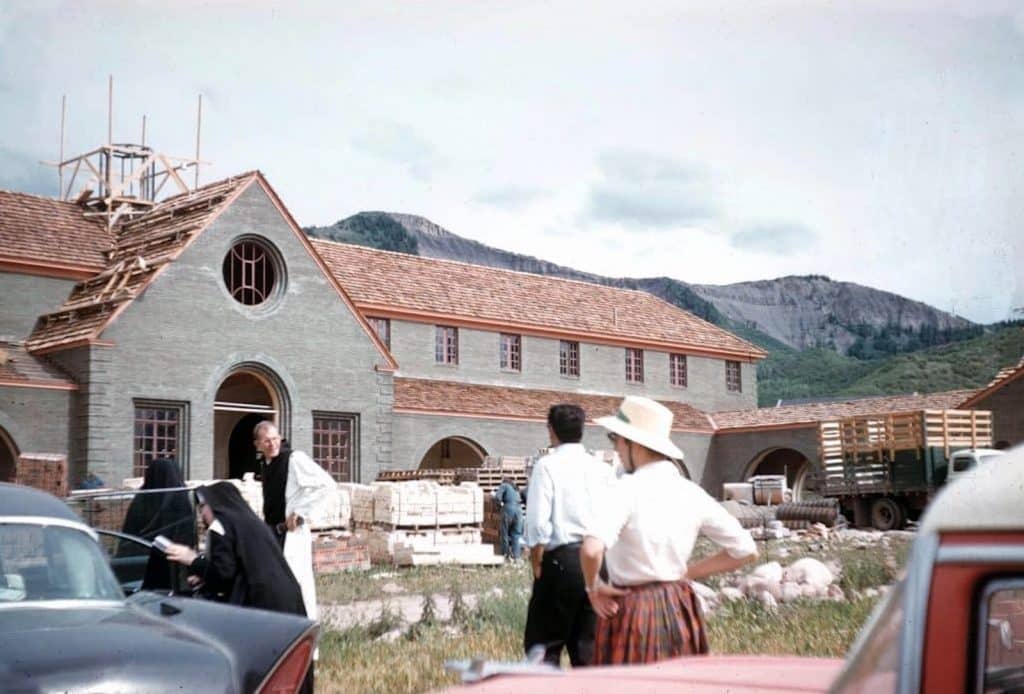St. Benedict’s Monastery In Old Snowmass Signals It Will Close; Process To Begin This Summer


After 66 years, the St Benedict’s Monastery in Old Snowmass will begin closing this summer, according to a message on its website.
The message, from Dom Damian Carr: “As many of you know, our monastic community has diminished significantly over the past 10 years. Recently two of our brothers returned to our founding Mother House in Spencer, MA. As a community, we have been discerning with the leadership of our Order how to move forward in our discernment process. We have decided that as of June 30th of this year, we will no longer be accepting retreat reservations in our guest facilities. This will enable the brothers to carefully focus their time and energy, personally and communally, on the needed next steps in our closure process.”
An interview request via email received an automated response from an inactive email, which referred to the website with the following note: “Please know that, at this stage, there are many questions we are not yet able to answer. We thank you for your understanding and support during this time of transition. St. Benedict’s.”
The monastery was founded by a group of monks who came to Colorado from St. Joseph’s Abbey in Spencer, Massachusetts. The monks were formally part of the Cistercian Order of the Strict Observance, also known as Trappist, who draw their fundamental beliefs and lifestyle from the sixth century Rule of St Benedict for monastic living.
One of several groups within the Catholic Church that follow the Rule of St Benedict, they derive their name from La Trappe Abbey, the monastery from which the movement and religious order originated in Soligny-la-Trappe, Orne, France.
The Aspen Times https://www.aspentimes.com/news/were-here-not-for-what-we-do-but-for-how-we-live/ reported in 2005 that the monks had bought the 3,100 acres in the rural Capital Creek Valley for about $150 an acre and spent less than $500,000 to design and build the original abbey. As of the story in 2005, the monastery counted 15 monks with an average age at the time of 65.
The location of the monastery holds modern historical significance. According to Charles D. Hart’s “History of Capitol and Snowmass Creeks” (snowcapcaucus.org/history), the first to stake a claim to land in Capitol Creek was Henry A. Staats, from Egypt, Illinois, in 1881 on Lime Creek, on what is now the property of St. Benedict’s.
An article on the history of St. Benedicts found on The Snowmass Capital Creek Caucus’s website reports that the monks bought the land from Gordon and Lena LaMoy in 1956, and that the additional acreage on the mesa across the road was bought from the Maurin family for growing hay for cattle. Other parcels were soon added by way of the Gobo Ranch and the Gates Ranch.
The monks who originally came to Colorado knew nothing about ranching and with “40 miles of ditches to maintain, 600 acres of pasture land to irrigate plus 600 acres of hayfields and 343 head of beef cattle to feed with a horse-pulled wagon, all at a high altitude, they soon hired Gordon LaMoy to teach them how to run a working cattle ranch.”
Like other Trappist monasteries throughout the world, the monks at St Benedict’s spend much of their life in “ora et labora,” work and prayer, and the fruits of their daily labor are used to financially support the monastery.
While many Trappist monasteries became famous for their production of beer, cheese, jams and other items, the monks at St. Benedict’s had a succession of business enterprises, first through ranching, then egg sales and eventually cookies. Money also came from the sale of books, including a tableful authored by Snowmass monks and published by small publishing houses and other efforts.
St. Benedict’s was also the home of Father Thomas Keating, a popular writer on Centering Prayer and one of the founders of Contemplative Outreach.
But the biggest economic driver for the monastery came in 1995, when then Abbott Joseph completed the addition of The Retreat House and retreat facilities that “were designed to foster the spirit of silence, solitude, meditation, and prayer for those seeking to deepen their practice and prayer life.”
Every summer since 1995, St Benedict’s has welcomed groups and individuals looking for a deeper spiritual experience, until now.
There is speculation as to why St. Benedicts is closing. Some longtime visitors cite the aging of current monks and inability to recruit and attract younger replacements. But only time and more information from the monastery itself can confirm the whys and the bigger question of what happens next to the land and wide-open space near significant wildlife migration routes the monks long protected.
There is no evidence at this time that the property is for sale.
By: Sarah Girgis | The Aspen Times \ April 17, 2023